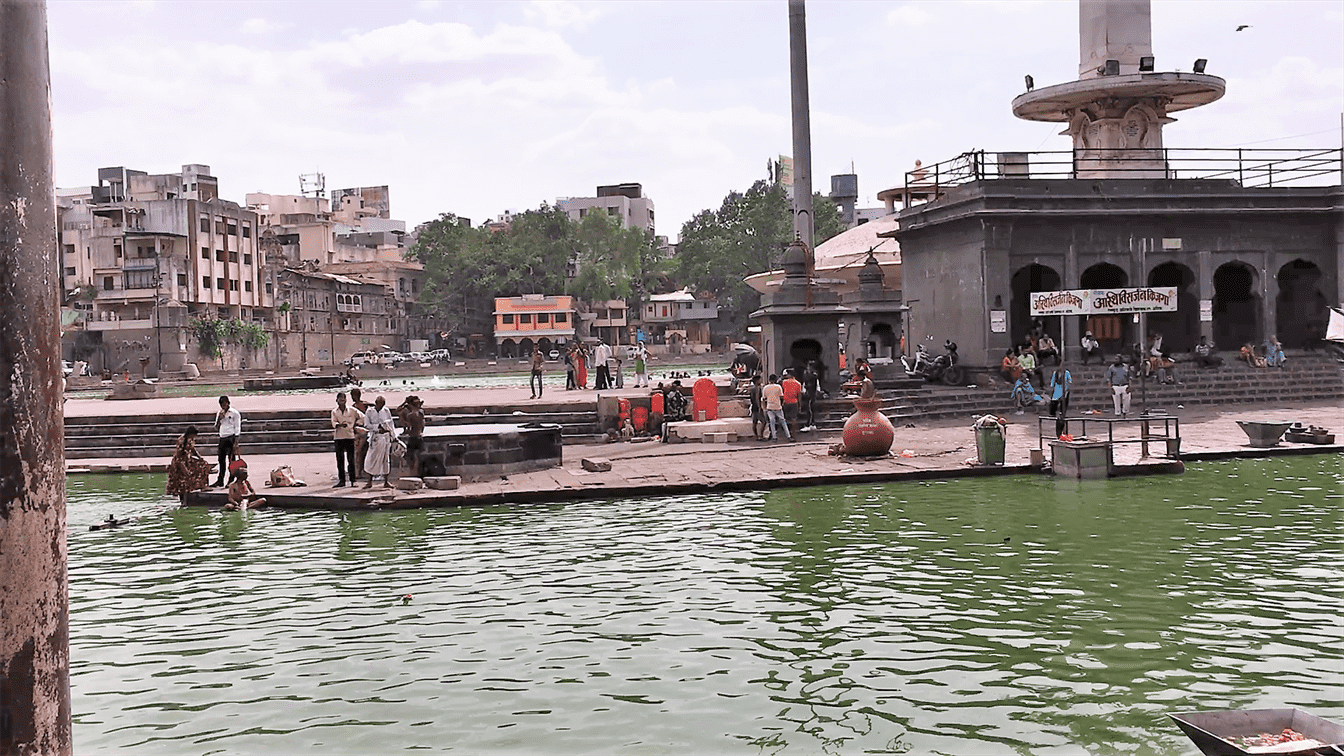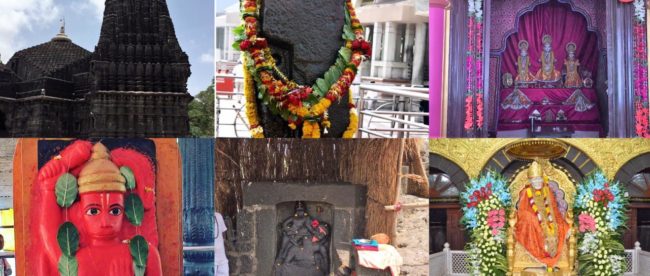A Tour To Shirdi, Shani Singnapur,Trimbakeshwar & Nashik
We started our journey from Hyderabad and it was an overnight journey we booked our hotel at the walking distance from Shirdi temple, we even booked a tourist guide who took us to Shani Singnapur, Trimbakeshwar & Nashik.
Shirdi Sai Baba story:
Shirdi is located in Rahat Taluka in Ahmednagar district. It is a famous temple which is the home of a famous saint of 19th century Sai baba. Sri Saibaba Sansthan Trust is one of the richest organization which manages this temple. He is dear to Hindus and Muslims, so being preached by both of the communities.
Sai Baba’s early years are a conundrum. Most accounts mention his birth as a Hindu Brahman and his subsequent adoption by a Sufi fakir, or mendicant. Later in life, he claimed to have had a Hindu guru. Sai Baba arrived in Shirdi, in the western Indian state of Maharashtra, about 1858 and remained there until his death in 1918.
He had a substantial knowledge of Puranas and Bhagwatgita he uses to show many miracles by healing sick and compelling verses. One of his famous wordings are “Have faith and patience – I will be always with you wherever you are”.
Baba was a unique personality who earned huge attention towards him, Some people thought that he was mad and even hurt him physically by throwing stones at him. Initially, Baba spent about 3 years at Shirdi. After this, for a period of one year, Baba left Shirdi and very little was known about sai baba during that period. He met many saints, fakirs and even worked as a weaver as history says. In the year of 1858, Baba returned to Shirdi permanently. For about five years of time, Baba took his accommodation under the neem tree and very often Baba used to wander in the jungle near Shirdi was very uncommunicative as Baba spent a lot of his time in meditation. Gradually Baba shifted his accommodation to a nearby mosque. Many Hindus and Muslims were visiting Baba. In the mosque, Baba maintained sacred fire which was called dhuni. Baba gave sacred ash to the entire visitor. People believe that ash is the best medicine to heal for all health issues. Baba was the god for all and used to participate in all religious festival. Baba had a habit of cooking and the same was distributed among all devotees as “Prasad” at the time of their visit. Baba best pass time was singing (religious) and dancing. Many believed that baba was a saint and even as a god. As time passed on the volume of visitors to Shirdi gradually increased.

I have seen his museum where his belongings are kept which shows he was a great devotee of Lord Krishna, Rama. His belonging includes Ram Darbar, Krishna idol and many more which shows his devotion as a Vaishnav.
Shani Singnapur:
Shani Signapur is the village of Maharashtra (India), Situated in Nevasa taluka in Ahmednagar district, the village is known for its popular temple of Shani, the Hindu god associated with the planet Saturn. Shingnapur is 35 km from Ahmednagar city. Shingnapur is also famous for the fact that no house in the village has doors.
The temple is believed to be a “जागृत देवस्थान” (alive temple), meaning that a deity still resides in the temple icon. Villagers believe that god Shani punishes anyone attempting theft. The deity here is “स्वयंभू” (self-evolved deity) that is self emerged from earth in the form of black, imposing stone. Though no one knows the exact period, it is believed that the स्वयंभू शनैशवरा statue was found by shepherds of the then local village. It is believed to be in existence at least since the start of Kali yug.

There is a story related to this temple that a shepherd touched the stone with a pointed rod, the stone started bleeding. The shepherds were bewildered. Soon the whole village gathered around to watch the miracle. On that night Lord Shanaishwara appeared in the dream of the most devoted and pious of the shepherds. He told the shepherd that he is “Shaneeshwara”. He also told that the unique looking black stone is his swayambhu form. The shepherd prayed and asked the Lord whether he should construct a temple for him. To this, Lord Shani Mahatma said there is no need for a roof as the whole sky is his roof and he preferred to be under the open sky. He asked the shepherd to do daily pooja and ‘Tailabhisheka’ every Saturday without fail. He also promised the whole village will have no fear of dacoits or burglars or thieves. And misfortune and divine punishment would befall anyone who attempts to steal.

Trimbakeshwar Jyotirling:
Trimbakeshwar is the temple of Lord Shiva and considered as one of the jyotirlingas among the twelve jyotirlingas. It is an ancient Hindu temple, which is located in the town of Trimbak, it is 28km from Nashik. This place is also the origin of the river Godavari.

The temple is situated in a hill region called Sahyagiri. The Temple premises is called Brahmagiri, also considered as the most sacred place of river Godavari (Brahma Sthalam). The Sun, Moon and Agni form the three eyes located in the different direction on this Jyotirlinga. Inside the main linga, there are three more lingas visible. These are considered as, Brahma, Vishnu and Maheshwara. There is a belief that anybody who performs puja for this Jyothirlinga, is considered as actually worshipping all these three Gods.

According to Shiva Purana, once Brahma (the Hindu God of creation) and Vishnu (the Hindu God of preservation) had an argument in terms of supremacy of creation. To test them, Shiva pierced the three worlds as a huge endless pillar of light, the jyotirlinga. Vishnu and Brahma split their ways to downwards and upwards respectively to find the end of the light in either direction. Brahma lied that he found out the end, while Vishnu accepted his defeat. Shiva appeared as the second pillar of light and cursed Brahma that he would have no place in ceremonies while Vishnu would be worshipped till the end of eternity. The jyotirlinga is the supreme partless reality, out of which Shiva partly appears. The Jyotirlinga shrines, thus are places where Shiva appeared as a fiery column of light. Originally there were believed to be 64 jyotirlingas while 12 of them are considered to be very auspicious and holy. Each of the twelve jyotirlinga sites takes the name of the presiding deity each considered different manifestation of Shiva. At all these sites, the primary image is lingam representing the beginningless and endless Stambha pillar, symbolizing the infinite nature of Shiv. The twelve jyotirlingas is Somnath in Gujarat, Mallikarjuna at Srisailam in Andhra Pradesh, Mahakaleswar at Ujjain in Madhya Pradesh, Omkareshwar in Madhya Pradesh, Kedarnath in Himalayas, Bhimashankar in Maharashtra, Viswanath at Varanasi in Uttar Pradesh, Trimbakeshwar in Maharashtra, Vaidyanath at Deoghar in Jharkhand, Nageshwar Temple at Dwaraka in Gujarat, Rameshwar at Rameswaram in Tamil Nadu and Grishneshwar at Aurangabad in Maharashtra.

Lord Shiva showed himself as a Jyotirlinga on the night of the Aridra Nakshatra. It is believed that a person can see the Jyotirlingas as columns of fire piercing through the earth as he reaches a higher level of spiritual attainment. Each Jyotirlinga site takes the name of the presiding deity. Basically, the Jyotirlinga signifies the infinite nature of Lord Shiv. At the highest level, Shiva is regarded as formless, limitless, transcendent and unchanging absolute Brahman and the primal Atman (soul, self) of the universe.
द्वादश ज्योतिर्लिंग स्तुति
सौराष्ट्रे सोमनाथं च श्रीशैले मल्लिकार्जुनम्। उज्जयिन्यां महाकालमोंकारं ममलेश्वरम् ॥1॥
परल्यां वैजनाथं च डाकियन्यां भीमशंकरम्। सेतुबन्धे तु रामेशं नागेशं दारुकावने ॥2॥
वारणस्यां तु विश्वेशं त्र्यम्बकं गौतमी तटे। हिमालये तु केदारं ध्रुष्णेशं च शिवालये ॥3॥
एतानि ज्योतिर्लिंगानि सायं प्रातः पठेन्नरः। सप्तजन्मकृतं पापं स्मरेण विनश्यति ॥4॥
॥ इति द्वादश ज्योतिर्लिंग स्तुति संपूर्णम् ॥
Whoever read this mantra daily during the prayers, get rid of all the evil of this loka, all the burden of sins get discarded by just chanting these verses.
Nashik:
Nashik is considered as the holy place and is situated near the bank of river Godavari it is a famous Hindu Pilgrimage and even famous for Kumbh Mela. Nashik is also known as the wine centre of India. It is the place where Laxmana cut the nose of Surpanakha who was trying to harm Sita.

The District has a great mythological background. Lord Rama lived in Panchvati during his vanvas. Agasti Rushi also stayed in Nashik for Tapasya. The Godavari river originates from Trimbakeshwar in Nashik. One of the 12 Jyotirlingas also at Trimbakeshwar.



Superb
I too visited a month back
wow I visited in march month but posting it here late
thanks didi shareing didi hm kuch likhanko mila yeha se